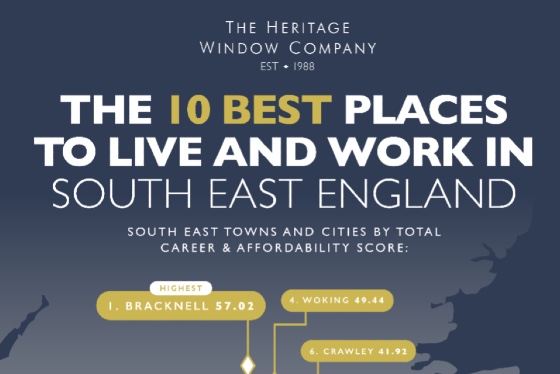Recruitment is supposed to be a gateway: the point where people and organisations meet, size each other up, and decide whether they are a good fit for one another. Too often, though, that gateway is built with walls rather than open doors. Recruitment processes that haven’t considered accessibility requirements make it unnecessarily difficult for disabled candidates to even get past the first stage. Talented people are turned away, not because they lack ability, but because the system was never designed with them in mind to begin with.
This is why accessible recruitment should not be dismissed as a niche issue or a box-ticking exercise. It goes beyond policy to creating conditions that ensure every candidate can perform at their best, and every role is filled by the person most capable of doing it. Employers who take this seriously gain more than just goodwill. They expand the pool of talent they are searching within, strengthen their workplace culture, and demonstrate a commitment to fairness that people notice.
The numbers back this up too. According to the World Health Organisation, 16% of the global population lives with some form of disability. In the UK alone, disabled people are nearly twice as likely to be unemployed compared with non-disabled people. Behind those statistics lies a vast reserve of skills too many organisations overlook, as Henny Swan (pictured), Director at TetraLogical, explains…
Job Adverts: More Than a First Impression
The hiring journey begins with the job advert, which does more than announce a vacancy. It tells candidates what the organisation’s values are, and inclusive language reinforces that message. Overly complex wording, industry jargon, or vague metaphors create confusion that risks pushing people away. A simpler, plainer style is often both clearer and kinder. Compare the cliché of a “fast-paced environment,” with the straightforward alternative: “You’ll work to tight deadlines and adapt quickly to changes.” This is clear, respectful, and paints a realistic picture of the role, and is more easily understood by those with neurodivergence, or those with different working styles. The second gives an honest picture of the role, while the first says very little.
That being said, inclusivity extends beyond more than tone. Adverts should be tested with individuals outside the hiring team, ideally representing a range of demographics and perspectives because what may seem obvious to one group may look like a barrier to another. Splitting out essential requirements from ‘nice to haves’ is equally important, as it helps candidates to assess their suitability without uncertainty.
Transparency is another equally important part of the process. Policies on flexible working hours, adjustments or Accessibility or Diversity, Equality, and Inclusion (DEI) policies should always be easy to find and clearly stated. Even the format makes a difference: HTML adverts can be made accessible to blind people who use screen readers in a way that image-based PDF ads are often not.
These details are not trivial, or to be overlooked. Research by LinkedIn found that job adverts which mention flexibility within an advertised role are 29% more likely to receive applications.In other words, flexibility affects who sees themselves in the role – including many disabled applicants for whom flexible working can be important. The same is true of accessibility: when it is visible within the recruitment process, it sends a clear signal that the role is open to a wider range of people.
Breaking Down Barriers in Applications
Once candidates have identified a role and decided to apply, the process itself can either encourage or discourage them. Too often, it does the latter. Overly rigid forms, inaccessible systems, or unclear instructions create friction where none is needed.
Employers can start to address this by offering flexibility in how applications are submitted, accepting Microsoft Word documents, accessible PDFs, or video CV’s, making it clear that all will be treated equally. Recruitment software must also be carefully scrutinised. Requesting an Accessibility Conformance Report (ACR) from providers and testing with assistive technologies is good practice and compliments existing due diligence processes. Online forms should be designed in smaller, logical steps with clear instructions and visible progress indicators that are inclusive for everyone. Automatic timeouts that disadvantage those requiring more time should be avoided, and applicants should be given the option to save and return to their progress later.
The business case for such measures is strong too, and it is not just an ethical concern. A 2020 Accenture study found that companies leading on disability inclusion outperformed their peers, achieving 28% higher revenue and double the net income. Excluding candidates through inaccessible systems, when viewed with this in mind, is both unfair and a missed opportunity.
Fairer, Smarter Interviews
If there is one stage of recruitment where accessibility should be obvious, it is the interview. This is the point of direct human connection after various stages of vetting and meeting necessary criteria. And yet, many interviews remain unnecessarily intimidating or full of exclusionary steps or practices.
At this stage, preparation is key. Giving candidates advance notice of the format, length, and interviewers ahead of time allows them to prepare properly. Sharing example questions can help to reduce anxiety and ensure that the interview measures ability rather than just nerves. Where tasks are involved, they should reflect the actual demands of the job, and not take the form of abstract puzzles designed to trip people up. Timed assessments are another sticking point for many: they can disadvantage candidates who use assistive technology or need additional processing time.
Accessibility is important whether the interview is remote or in person. Online platforms should have captions or interpretation options, with clear joining instructions. In-person venues must be physically accessible, with requested adjustments such as interpreters arranged in advance. Interviewers themselves also need preparation. Training on unconscious bias, inclusive practice, and disability confidence should be considered standard, not optional. It pays off. Research from McKinsey & Company has shown that companies in the top quartile for diversity are 39% more likely to outperform competitors financially. Put simply, inclusivity at the interview stage directly feeds into long-term business performance.
Communication and Onboarding
Accessibility does not end once the contract is signed either. How employers communicate during this stage matters just as much. For example, having a named point of contact reassures candidates that they know whom to approach for clarification or adjustments. Sharing information in accessible formats – covering everything from scheduling breaks to providing assistive technology – shows that inclusion continues beyond the selection process.
As a result of this, onboarding should follow the same principles. Information about the first day, the technology available, and how personal data will be stored should be available upfront. Training resources and internal platforms must all be accessible from the outset, and any accommodations/adjustments promised during recruitment should be implemented immediately without delay. A poor onboarding experience can undo all the goodwill built during hiring and hinder people’s performance.
Changing the Culture
Accessible recruitment cannot be achieved by patching individual problems as part of a ‘whack-a-mole’ approach. It requires a cultural transformation: a way of working that embraces and designs processes that assume diversity from the outset. Organisations that adopt this approach stand to benefit from gaining access to a wider talent pool, while at the same time demonstrating that they genuinely value fairness and respect as part of the recruitment process.
Today’s job market underlines why this matters. The Office for National Statistics (ONS) reported that, as of June-August 2025, the number of vacancies in the UK fell by 10,000 (1.4%) compared with the previous quarter, bringing the total to 728,000. With fewer openings available, competition for each role intensifies, and the responsibility on employers to ensure fair and accessible processes becomes even greater. In times of pressure, accessibility is the safeguard that ensures talent is judged on ability, and not its ability to navigate unnecessary barriers.
A recruitment process designed with accessibility in mind makes that commitment visible, showing that inclusion is more than a slogan, and is a fundamental part of how the organisation operates. For many employers, this kind of change doesn’t happen overnight. It involves revisiting long-standing processes, challenging assumptions, and embedding accessibility into every aspect of recruitment. Guidance from those with practical expertise of handling this sensitively can make the difference between well-intentioned policies and systems that truly work for everyone.









